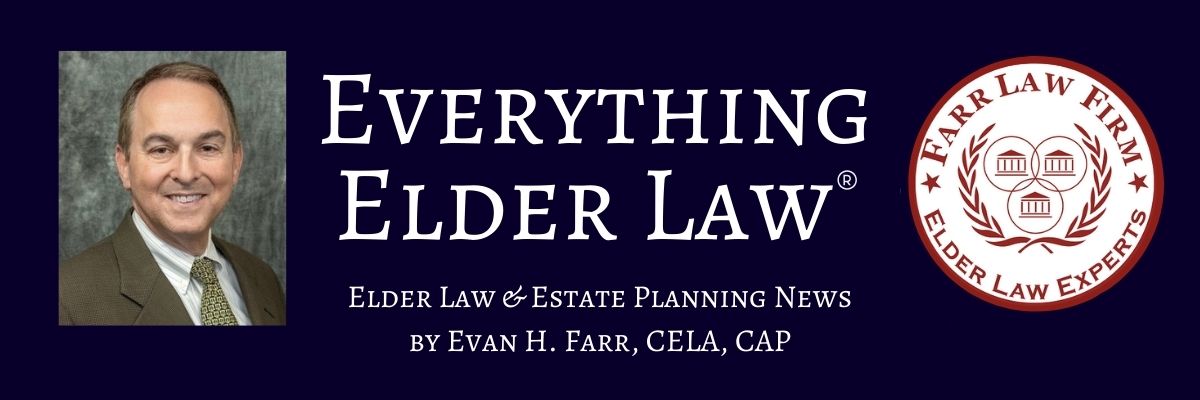 Laura Carstensen, a psychology professor at Stanford University and the founding director of the Stanford Center on Longevity, spoke at the LeadingAge Leadership Summit in Washington, DC, last month. She explored how life span has changed over the last century, describing how in just a few generations, the life of an average human has increased by 30 years!
Laura Carstensen, a psychology professor at Stanford University and the founding director of the Stanford Center on Longevity, spoke at the LeadingAge Leadership Summit in Washington, DC, last month. She explored how life span has changed over the last century, describing how in just a few generations, the life of an average human has increased by 30 years!
In the 1800s, the average human life lasted through the mid-30s. In 1900, life span hit 47. Now, half of all babies born in 2000 or later will make it to 100, and in America, that increases to age 104! Modern medicine, exercise, healthier lifestyles, electricity, and other technological advances have caused unprecedented increases in longevity. “This is why aging is so difficult for so many: It’s brand new!” Carstensen said. “It’s something we have not had in human history.”
Who Will Care for These Seniors?
During Carstensen’s speech, she discussed one of the many challenges of the aging population. She said, “(w)hile the population is aging, fertility is decreasing.” Carstensen described how fewer children living longer lives is what leads to aging societies. “If there are less people being born and more who are aging, who will take care of all these seniors? Who will help ensure they get extra quality out of all that extra life span?”
To answer this question, Carstensen noted the seniors among us now are “not the same as those of 25, 50, or even 100 years ago. They’re more productive, often want to work longer, and most likely will be better able to care for themselves for longer.” She pointed to a Journal of Gerontology study that found half of people over age 85 say they’re healthy enough to work, even if they are not actually working.
Map of Life Initiative Explores How to Meet Challenges that Longevity Creates
An initiative that Carstensen’s Center on Longevity at Stanford researched and compiled is the Map of Life Initiative, designed to help envision a society that supports people living high-quality lives for a century or more. The center describes needing a Map of Life because:
- The existing norms no longer work because they evolved for lives that were half as long.
- The traditional three-stage life course — education, work and family, retirement — is outdated.
- A new life course is needed that is more flexible and has multiple stages.
- Modern life has a “pacing problem.” Middle age is “crammed with career and caregiving responsibilities, while many older people find themselves with neither enough purpose, connection, or income to live comfortably.”
- New roles and opportunities must be created so that people experience purpose, belonging, and worth at all stages of life.
- Research and defining of new models for education and lifelong learning, how we work, new policies for health care, housing, the environment, financial security, and promoting more intergenerational partnerships is needed.
- A new narrative redefining what it means to be “old” and valuing people at different stages of life is also necessary.
- A resource for media outlets, advertisers, and the entertainment industry is essential. The Map of Life and related initiatives will play an important role in this effort by sharing stories and creating new imagery and content about longevity and aging.
Principles That Make Up the Map of Life
It took three years for the Stanford researchers to create the Map of Life report. The report outlines how we might make aging a healthier, more secure, and more fulfilling experience for all. According to researchers, we can meet challenges that longevity creates if we act now, guided by these principles:
- Age diversity can be highly beneficial: The “speed, strength, and zest for discovery” common in younger people, combined with the wisdom of older people, can create possibilities for families, communities, and workplaces that haven’t existed before. Rather than focusing on the costs incurred by an “aging” society, we should focus on the benefits of a society that is age-diverse.
- Invest in future centenarians and optimize each stage of life: The years between birth and kindergarten are an important time for children to acquire many of the cognitive, emotional, and social skills needed for a healthy, happy, and active life. We should invest in these future centenarians by optimizing each stage of life, so that “benefits can compound for decades, while allowing for more time to recover from disadvantages and setbacks.”
- Physical health and the prevention of disease throughout the life span is critical to longevity: Investments in public health and life spans should be made at every life stage. Addressing health disparities is also important, focusing on better access to health care and also on the health of communities, especially those affected by poverty, discrimination, and environmental damage.
- Advances in science and the future of aging will make the aging experience very different: Today’s young children will benefit from an amazing amount of medical advances and emerging technologies that will make their experience of aging very different from that of today’s older adults. Although we cannot stop the process of aging, the emerging field of geroscience has the potential to transform how we age. Scientists now are working on identifying and “reprogramming” the genetic, molecular, and cellular components that make age the dominant risk factor for certain diseases and degenerative conditions, such as Alzheimer’s and Parkinson’s.
- Work longer with more flexibility: According to the center’s research, “(o)ver the course of 100-year lives, we can expect to work 60 years or more. But we won’t work as we do now, cramming 40-hour weeks into lives impossibly packed from morning until night with parenting, family, caregiving, schooling, and other obligations.” Workers will continue to seek flexibility, including continuing to telecommute and expanded benefits such as paid and unpaid intervals for caregiving, health needs, lifelong learning, and other transitions to be expected over century-long lives.
- Education is a lifelong pursuit: Rather than only receiving formal education into the first two decades of life, the Map of Life envisions new options for learning outside the confines of formal education, with people of all ages able to acquire the knowledge they need at each stage of their life and additional ways to access continuous learning.
- Build longevity-ready communities: We must start now to design and build neighborhoods that are longevity-ready and to assess potential investments in infrastructure paying close attention to longevity.
- Meeting the challenges of longevity is an all-hands effort: Meeting the challenges of longevity is not the sole responsibility of government, employers, health care providers, or insurance companies. According to researchers, “(t)he policies and investments we all undertake today will determine how the current young become the future old — and whether we make the most of the 30 extra years of life we now have. The tricky part is convincing lawmakers, employers, educational institutions, and the public to consider alternatives to some of our culture’s most deeply ingrained patterns.”
“We need to stretch out life,” Carstensen said. “This is an enormous opportunity to improve quality of life at all ages.” The center is working now on appointing new research fellows who will study how to make these suggestions reality. “A map becomes a lot more useful once you actually get moving,” they said.
“Century Lives” Is a Podcast from Stanford Center on Longevity to Continue the Conversation About Aging and Longevity
How can we ensure that our lives are not just longer but healthy and rewarding as well? “Century Lives,” the new podcast from the Stanford Center on Longevity, is here to continue the conversation. In each episode, author Ken Stern enlists a different expert to explore the promises and challenges of greater longevity.
In one episode, for example, three generations of a family, aged 23 to 100, discuss the different “maps” their lives have charted. In another, Donna Butts of Generations United profiles the trend of multigenerational living. Further episodes address health disparities, urban development, education, and work.
Listen to “Century Lives” for free on Apple or Audible.
Maximize Your Longevity and Be Sure to Plan Ahead
As I’ve written about in many previous articles, eating healthy, exercising, and minimizing stress are all ways to maximize your longevity. But not everyone is so fortunate as to be able to experience good health in their later years. Because you never know if or when your physical or cognitive health might take a turn for the worse, it is always wise to plan for your future possible incapacity, long-term care needs, and eventual death. Incapacity Planning — signing a durable general power of attorney and an advance medical directive and related documents — is perhaps the most important type of lifetime planning, and should be done by competent adults of all ages. Estate Planning — adding either a revocable living trust to avoid probate or a Last Will and Testament if you are not concerned with avoiding probate, is important for anyone who owns assets. Long-term care planning using our firm’s Living Trust Plus® Asset Protection Trust is important to consider for people over 65 or anyone faced with a medical diagnosis that might lead to the need for long-term care. Life Care Planning is important for anyone who is already beyond stage 1 on the elder care continuum. If you haven’t done your own planning and are ready to discuss it, please call us to make an appointment for an initial consultation:
Fairfax Elder Law Attorney: 703-691-1888
Fredericksburg Elder Law Attorney: 540-479-1435
Rockville Elder Law Attorney: 301-519-8041
DC Elder Law Attorney: 202-587-2797
















Leave a comment
You must be logged in to post a comment.